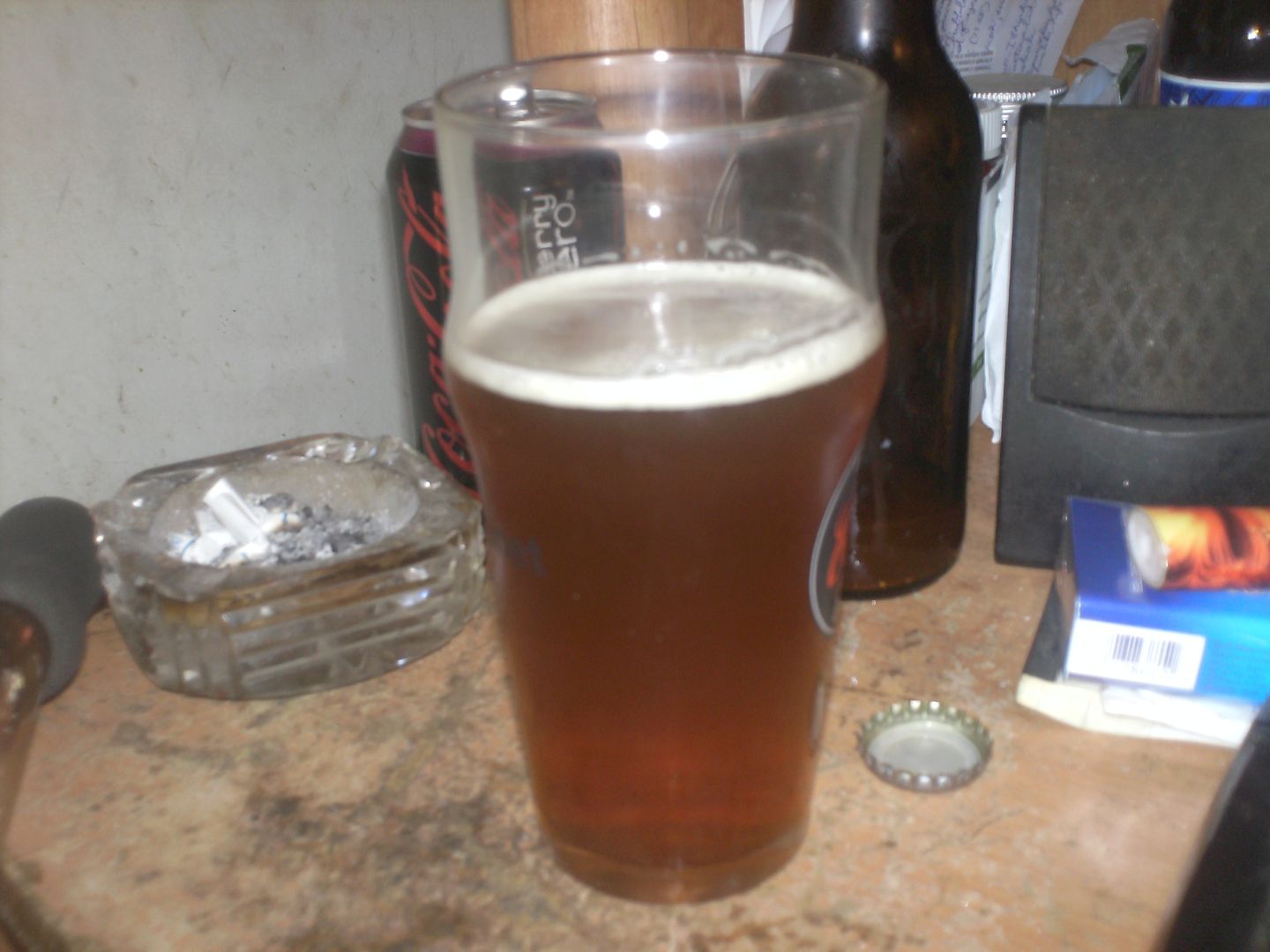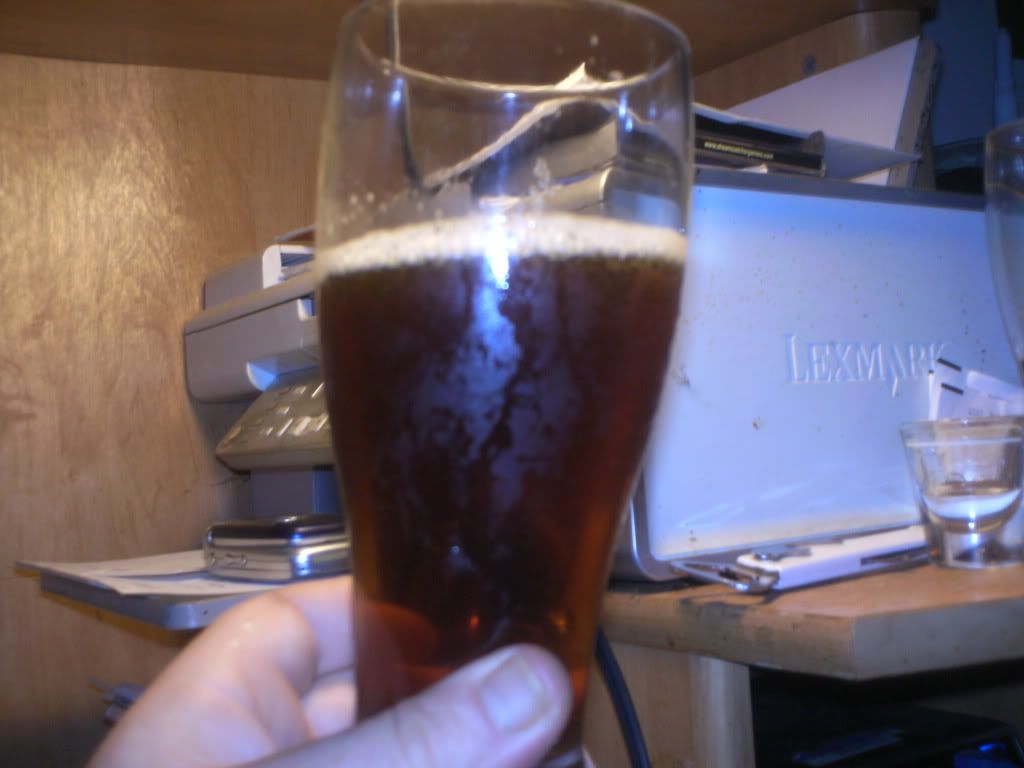Thank you for that recipe and the great instructions. It looks very do-able with supplies I have on hand right now. Do you have any thoughts on incorporating invert sugar into this recipe?
No problem. There are plenty of brewers on the forum with more knowledge and experience making ales than me, and my directions are merely a compendium of what I learned from them. Look at posts by ajf, for example. He always has something valuable to say. Terry Foster's
Pale Ale is a nice book about the history of the style. It also has some recipes in the back.
When I started to make ales I worried excessively about complexity and my first attempts at making English bitter often featured at least three different malts and hops. I've since learned that a simple recipe and clean technique will take me where I want to go.
Many agree that a malt bill that contains a British 2-row pale malt and one of British Crystal Malts makes a good bitter. You can play with the amount of grain to make a milder or stronger beer, but I've been advised not to let the percentage of Crystal Malt go above 7.5%. I use 94% Marris Otter because I think it creates a rich flavor, and 6% Crystal 60 because it gives my beer a lovely copper color, but others might like a paler beer. In that case, drop down to Crystal 40 or use less Crystal 60. As long as your malt and hops are balanced according to the style, you're golden. A SMaSH using just British 2-row pale malt and EKG would be a great summer beer, imho. To each his own.
If you're producing beers that seem to produce a heavier, sweeter flavor profile than you like, adding about 8 oz. of sugar will produce a drier beer. You can also used flaked corn for the same purpose. I don't do either, because I'm still learning the basics at this point and want to keep my additions to the minimum.
You can also play with lowering the mash time and extending it. I'll sometimes mash in at 152F and mash for 90 minutes if I have the time. If my mash temperature drops down to 150F. I don't worry about it.
I mash out by adding enough hot water to the mash and stirring until I hit 168F. I fly sparge but haven't invested in the equipment that I would like. I simply use a gravity system with a long piece of high-temperature silicon tube attached to the lauter tun above and coiled once abound the top of the grain bed, leaving about a inch of hot liquid above the grain bed throughout the sparge. I try to sparge for up to an hour, heating the sparge water as needed. I'll quit when my last runnings hit 1.010.
You can do something similar using a batch sparge and you'll produce great beer. I don't really think it makes much of a difference. Some may say that fly sparging produces more efficiency, but I don't worry about efficiency past a certain point - that's my wife's job.
With respect to doughing in with cold water and raising the temperature using direct heat: this is something that I learned from someone on the forum. He uses a tri-decoction method for German pilsners and bocks, and uses direct heat for both the mash tun and decoction pot. It's a great method that I plan to start using when I'm done travelling this month. Since I'm brand-new to the method, I thought I'd start by practicing the mash-tun skill set (i.e., bringing my mash to a certain temperature by direct heat and stirring - and without scorching it, lol). It worked great. I put a digital thermometer through a silicon stopper and attached it to a stainless steel rod, and stirred using a stainless steel spackle stirrer attached to a 1/2" drill. The next step was to pour the mash into the mash tun and adjust the final temperature with hot water (I didn't need to add hot water) - no problem. Hold the rod with one other hand while your stirring, and stir around it without hitting it (like I did) or you'll send your rod flying out of the tun like a missile. Now that I'm somewhat competent at this I'm going to try it using a mash tun and decoction pot as per the tri-decoction method for German beers.
https://fbcdn-sphotos-e-a.akamaihd.net/hphotos-ak-xpa1/t1.0-9/p403x403/10500463_609776609119494_685217336398662868_n.jpg
https://scontent-b-iad.xx.fbcdn.net/hphotos-xfp1/t1.0-9/p403x403/10464228_609777692452719_2843150153800973145_n.jpg
I used a Blichmann tun with a bottom plate for sparging - but only because, after drilling a hole for a thermometer in a 10 gallon Rubbermaid water cooler, and attaching a ball valve on the bottom, I forgot get an adapter for the bazooka screen. A water cooler will work will for the simple infusion mashes that a bitter requires.
Search for Foster's water profile for pale ales; I have pretty soft water here in Long Island, so a Tbsp. of Gypsum is all that I need to bring my numbers in line.















![Craft A Brew - Safale S-04 Dry Yeast - Fermentis - English Ale Dry Yeast - For English and American Ales and Hard Apple Ciders - Ingredients for Home Brewing - Beer Making Supplies - [1 Pack]](https://m.media-amazon.com/images/I/41fVGNh6JfL._SL500_.jpg)












































